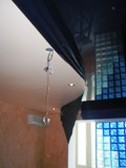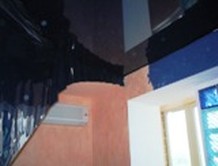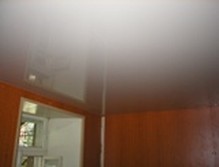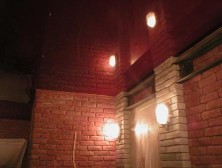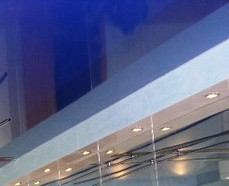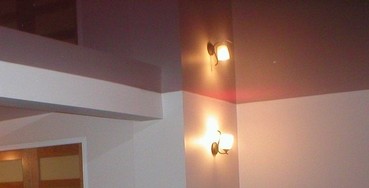"Wall-to-Wall" - Plafonds BZ systems Inc
Main menu:
"Wall-to-Wall"
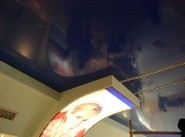
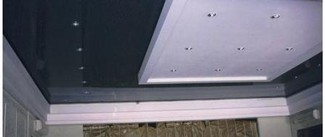
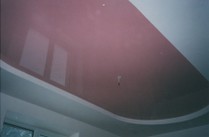
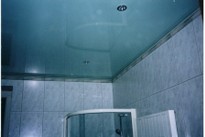
“Wall-to-Wall” is the original classic system that introduced the stretch ceiling concept. Traditionally, it is flat membrane of different shapes that is stretched over specifically design rail attached to vertical surfaces of the room or niches. Most widely used in this system is the film of lacquered texture. Lacquered surface has reflection properties thus creating a visual height effect. The ceilings that use Wall-to-Wall system can be well combined with different types of lighting, such as chandeliers, cornice lighting and particularly wall lighting or lighting directed at the wall.
____________________________________________________________________
Installation methods and details

In Wall-to-Wall stretch ceiling the membrane can be attached to the rail in two distinct ways, i.e. with the use of a special harpoon welded to the edge of membrane or without it.
Installation method with the use of the harpoon:
• Allows for a faster installation of the ceiling as opposed to the method without the use of harpoon
• Is better equipped for removal and reinstallation of the membrane in case of the need to get access to the ceiling space (wiring/ plumbing)
• Requires accurate space measurement and excludes the possibility of changing the dimension of the membrane after the manufacturing process begins
• Provides perfect linear smoothness of the seams at installation
• Offers a large selection of mounting rails with different functional and decorative details.
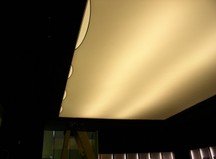
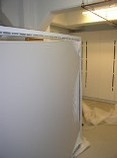
Installation method without the use of the harpoon
• Requires only the dimensions of the rectangular that repeats the configuration of the room. The excess film is removed by cutting at the edges
• Allows for easy removal of any wrinkles, tucks, etc. that can appear during the installation in the corners.
• Uses the installation technique of film tucking.
This system employs the use of specially constructed frames that permit the design of 3D ceiling of different forms. This type of ceiling was used in the pool space of a condo "Le Solano" (Old Montreal), designed by the Architect Groupe Marchand Design & Architecture. Such a ceiling can be executed by using a single membrane with a use of additional “pockets” to attaching the film and giving it the desired shape.
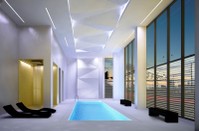
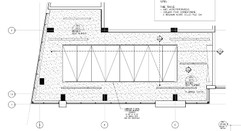
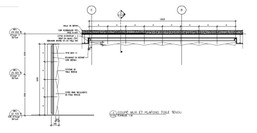
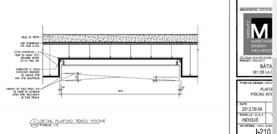
The 3D configuration can have a wave shape if the rail to which the membrane attached is fixed to the wall surface in a wavy line. In certain cases this technique is required not only for decorative purposes, but as an effective means to hide certain building’s engineering details such as beams, ledges, wiring etc.
Wall-to-Wall stretch ceilings can be easily combined with ceiling that uses other types of materials. Ceilings that used lacquered membrane create a special effect when installed in the recesses of the principal ceiling made out of gypsum plasterboard. 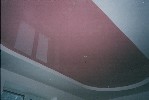
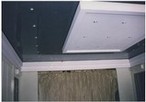
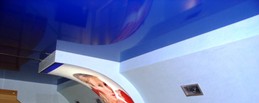
Another example of this type of Wall-to-Wall ceiling can be found in the project of ABCP + GLCRM + POPULOUS architectes en consortium in the construction of AMPHITHÉÂTRE MULTIFONCTIONNEL DE QUÉBEC - Lot 5 -Aménagement du Lounge Premium in Quebec City.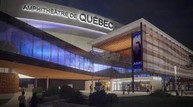
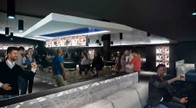
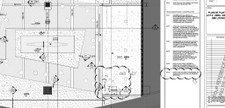
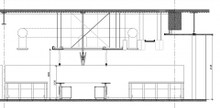
Wall-to-Wall stretch ceiling system offers a large variety of colours and textures. Most widely used are matte and glossy lacquered textures. Matte membrane (PVC film), the least costly, is mainly used in projects that want to take advantage of the technological and functional properties of stretch ceilings, i.e. to separate the space, cover wiring and plumbing,and for aesthetic reasons. Moreover, in case of leaking and water infiltration the water is retained in the ceiling space and can be easily removed without any damage to the interior.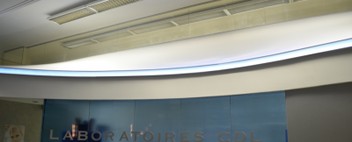
Lacquered membrane creates powerful visual effect. This technique is typically used to accentuate the elements in the interior design.
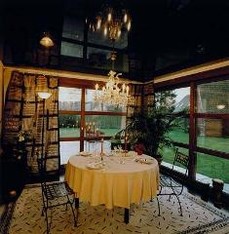
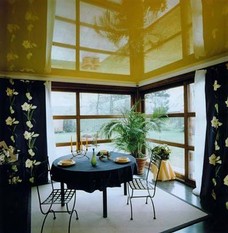
Decorative textures can imitate leather, wood, stone, suede, fabric. However, these textures are rarely used to cover all the ceiling space, but serve as decorative elements of interior design.
Stretch ceiling is attached to a specifically designed profile using the gas heat generator that heats the film up to 50-60C. Such process does not damage or effect room interior.
The profile to which the film is attached can be fixed to ceiling or to walls. The mount should be solid as during the installation the pressure may reach 50kg per point. After the installation the pressure is distributed evenly measuring about 10kg/lm. It is preferable already at the design stage make provision for additional mount means, such as metal railing or plywood, to reinforce the fixture of the profile.
Stretch ceiling technology permits the use of practically any additional elements such as light fixtures, fire jets, access hatches etc.
• Installation of light fixtures



• Installation of molded elements (outlets, borders etc.)
• Installation of access hatches
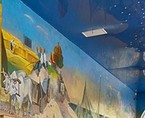
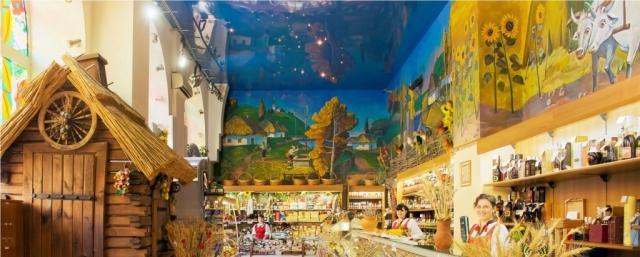 In spite of the fact that "Wall-to-Wall" stretch ceiling is the most basic system, its cost cannot be calculated based on price per square meter. There are many factors that determine the price in each particular case, such as:
In spite of the fact that "Wall-to-Wall" stretch ceiling is the most basic system, its cost cannot be calculated based on price per square meter. There are many factors that determine the price in each particular case, such as:
1. Size of the ceiling area;
2. Perimeter length;
3. Number of angles;
4. Number of inserted elements such as light fixtures, jets, etc;
5. Type of selected film;
6. Type of selected profile mount;
7. The presence of curved lines.
Different combinations of these elements result in different price range. The estimation cost can be given only upon the presentation of the design project as well as information of the space size.
Larger surface space and straightforward shape of the ceiling will result in lower cost per sq. m. Sometimes, it is less expensive than gypsum plasterboard "Stretch ceilings. Are they expensive?".
Contract terms and deadlines are also determined by mentioned above factors. To obtain more detailed information contact our specialists for a consultation to discuss different options before the project begins.

